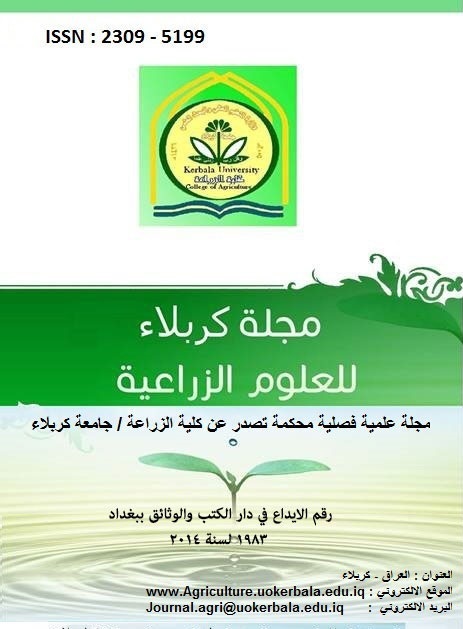Effect of chop length and level of dry matter on fermentation and nu-tritive value of ensiled corn stover
DOI:
https://doi.org/10.59658/jkas.v4i4.314Keywords:
Silage, Stover, Chop length, Dry matter.Abstract
This study was aimed to investigate the effect of chop length (1-1.5 or 2-2.5 cm) and dry matter (DM) levels (25, 30, 35 or 40%) on fermentation of corn stover silage and its nutritive value. Chopped samples were pretreated with 1% urea and 8% of date's honey and ensiled for 60 days. Results showed an increase (P˂0.01) in DM content with increasing chop length in association with a 0.96% decrease in ether extract (EE) content. According to fermentation characteristics, all samples were good quality; pH values ranged 3.73-4.33 for the lowest and highest levels of DM respectively. Concentrations of ammonia nitrogen (NH3-N) were below 0.5% of total nitrogen (TN). Lower pH (P˂0.01) was recorded in samples of stover ensiled with fine chop length (FCSS), but it was characterized with higher NH3-N concentrations as compared with those ensiled with coarse length (CCSS) (3.99 and 0.43 vs. 4.08, 0.33 % of TN, respectively). Results also showed higher (P˂0.01) DM loss in FCSS (15.58 vs. 10.99%), however, it was 30 hours more (P˂0.01) resistant to aerobic spoilage as compared with CCSS, moreover, it was prior (P˂0.05) in in vitro DM and organic matter (OM) digestibilities (IVDMD and IVOMD). Quality parameters were affected by DM contents of ensiled materials, where, there was a significant increase (P˂0.01) in DM loss and a decrease (P˂0.01) in resistance to aerobic deterioration. Values of buffering capacity (BC) were increased (P˂0.05) with increasing DM levels, higher values of 113.11 Meq. NaOH/100 g DM was estimated in 40% level of DM. This level was correlated with lower (P˂0.01) IVDMD, 57.87% and IVOMD, 60.73%. Good quality of corn stover silage samples in this study was confirmed by high Fleig point values of about 86-90.
Downloads
Published
How to Cite
Issue
Section
License
Copyright (c) 2017 Copyright (c) 2024 is the Author's article. Published by the Journal of Kerbala for Agricultural Sciences under a CC BY 4.0 license

This work is licensed under a Creative Commons Attribution 4.0 International License.
Licensing Terms
All articles are published under a Creative Commons License and will be directed to the Creative Commons Attribution 4.0 International License (CC BY 4.0) That permits use, distribution, and reproduction in any medium, provided the original work is properly cited. This license also allows the work to be used for commercial purposes.
Use by both non-commercial and commercial users
This content is licensed under a Creative Commons Attribution 4.0 International (CC BY 4.0) license, permitting use by both non-commercial and commercial users. Individual users may access, download, copy, display, and redistribute the articles to colleagues, as well as adapt, translate, and text- and data-mine the content, subject to the following conditions:
- The author's moral rights, including the right of attribution and the right to protect their work from derogatory treatment, are respected.
- Where content in the article is identified as belonging to a third party, users must ensure that any reuse complies with the copyright policies of the owner of that content.
- If the article content is reused for research or educational purposes, users should maintain a link to the appropriate bibliographic citation, including the DOI and a link to the published version on the journal's website.

